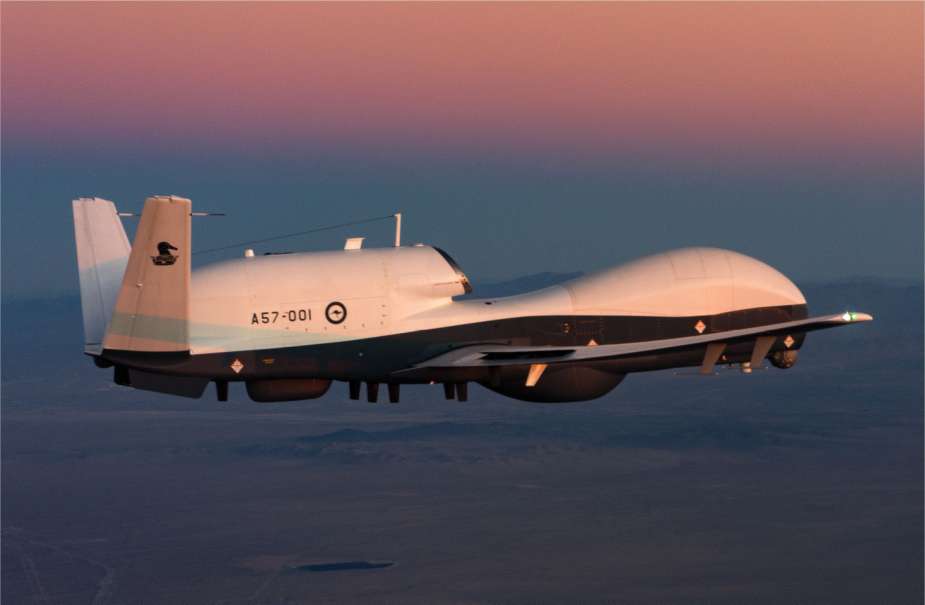Breaking news
MQ-4C Triton UAS prepares for Australian skies as Northrop Grumman launches pre-delivery phase.
On February 15, 2024, Northrop Grumman announced the transition of Australia's first MQ-4C Triton unmanned aerial system (UAS) to the next stage of its deployment process. The UAS was transported from the Palmdale Aircraft Integration Center in California to Patuxent River for the final phase of preparations before being delivered to Australia. The MQ-4C Triton is expected to support the operations of the P-8A Poseidon patrol aircraft fleet in monitoring the nation's maritime interests.
Follow Air Recognition on Google News at this link
 Powered by a Rolls-Royce AE 3007 turbofan engine, the Triton has a significant range of 15,200 km and is capable of operating at altitudes up to 50,000 feet. (Picture source: Northrop Grumman)
Powered by a Rolls-Royce AE 3007 turbofan engine, the Triton has a significant range of 15,200 km and is capable of operating at altitudes up to 50,000 feet. (Picture source: Northrop Grumman)
The Triton UAS, developed under the Broad Area Maritime Surveillance (BAMS) program, represents an adaptation of the RQ-4 Global Hawk, with modifications to its airframe and wings for maritime applications. It is equipped with sensors designed to detect and track maritime vessels, collecting information on their speed, location, and classification.
Australia intends to deploy up to seven Triton UAS at the Royal Australian Air Force (RAAF) Base Edinburgh. These systems are expected to work in conjunction with the P-8A Poseidon aircraft, as part of a strategy to phase out the older AP-3C Orions fleet. The Triton's design allows for extended flight duration, enhancing the country's ability to conduct continuous intelligence, surveillance, and reconnaissance (ISR) operations over broad maritime areas. A specialized team will analyze the surveillance data collected by the Triton to ensure its effective utilization.
The MQ-4C Triton features the AN/ZPY-3 Multi-Function Active Sensor (MFAS) radar, an active electronically scanned array that broadens its surveillance coverage. Designed for an operational life of 51,000 hours, the Triton includes safety features such as a "due regard" radar, de-icing, and lightning protection systems to facilitate safe operation under various conditions.
Controlled from ground stations, the Triton's mission control system is based on an open architecture, promoting flexibility and interoperability. It includes dual redundant flight controls for reliability. Powered by a Rolls-Royce AE 3007 turbofan engine, the Triton has a significant range of 15,200 km and is capable of operating at altitudes up to 50,000 feet and a maximum speed of 575 km/h. Its dimensions include a length of 14.5 meters, a height of 4.6 meters, and a wingspan of 39.9 meters, with a gross weight of 14,630 kg. The UAS's capability to remain airborne for extensive periods, up to 30 hours, supports long-duration missions essential for ongoing maritime surveillance.


























